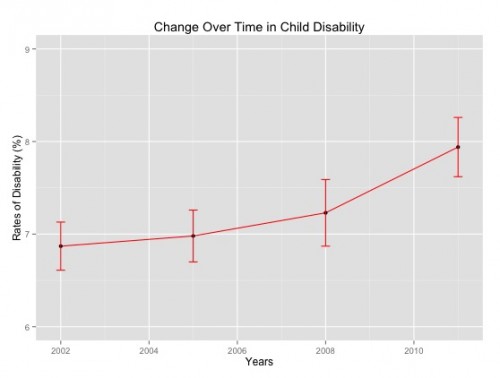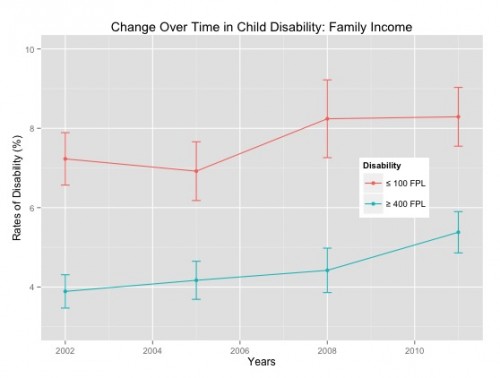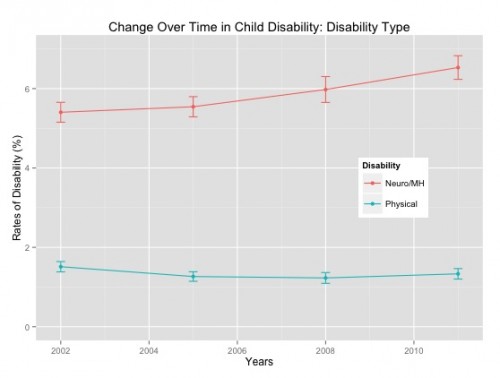Many writers have worried about the increasing number of disabled American adults. Some argue that the social security disability payment system encourages able-bodied adults to drop out of the work force. But the proportion of American children who are disabled is also increasing.

These data are from Amy J. Houtrow, Kandyce Larson, Lynn M. Olson, Paul W. Newacheck and Neal Halfon based on surveys of parents aged 0 to 17 years. The increase in disability appears to accelerate after 2008, when the recession hit. ‘Disabled’ means that the child had a chronic condition that limited an activity such bathing or walking; or that the child needed special education or early intervention services. Using a somewhat different definition, the CDC also finds increasing rates of childhood disability.
What kinds of disorders are causing these disabilities? The researchers classified disabilities as either physical or neurological/mental health. Neurological/behavioral disabilities are much more common. Moreover, it’s the neurological/mental health disabilities that are growing; whereas physical disabilities have actually declined.
Disabilities are also more common among children in poor families. In the next graph, the red line represents families at or below the federal poverty line, while the blue line represents families making four or more times the poverty level. Houtrow and her co-authors note that the rate of disability has increased more quickly among more affluent families than among the poor, but the wide error bars around the estimates for poor families make me skeptical about this claim.

So why is childhood disability increasing? We can’t tell from these data, so what follows are just my thoughts.
Children aren’t faking disability to avoid joining the workforce. I don’t think parents gain anything by exaggerating the limitations of their children. There aren’t, to my knowledge, groups of lawyers making their livings filing disability suits on behalf of children.
Disability is one those concepts like “competence” or “sanity” that has clear paradigm cases but fuzzy boundaries. So perhaps the concept of disability is expanding over time. That is, maybe the definition is changing, not the children. I think this is likely and even sensible. The standard for what counts as “able” may be rising because the social expectations that define minimum cognitive or behavioral functioning for children are rising. Physical labor is disappearing and employment increasingly requires sophisticated skills deployed in office settings. A neurological or mental health impairment makes you less able to function in an office and also in the schools designed to prepare you for one.
But it’s also possible that children are changing. Things have gotten harder for most families and children: median family income has fallen since 2000. Hard times have stressed families and we may be seeing the costs of that stress in the mental health of our children.


